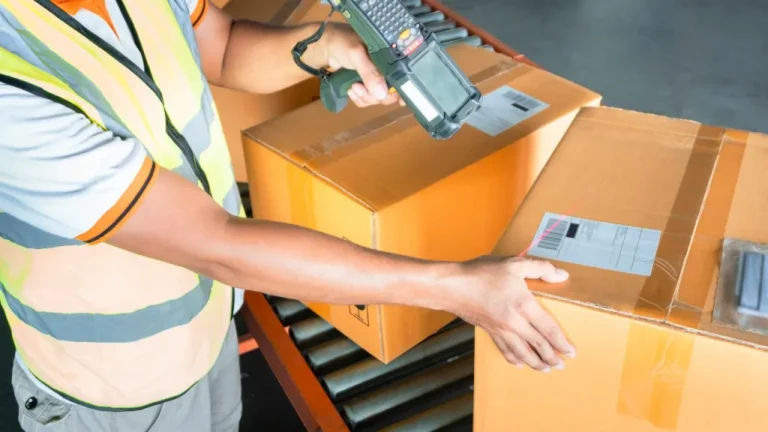Did you know that Return Merchandise Authorization (RMA) processes can impact up to 35% of a company’s revenue? In this article, we’ll explore RMAs, how they work, and best practices for eCommerce success.
What is RMA?

Return Merchandise Authorization is a vital process in eCommerce that facilitates the return of purchased items by customers for various reasons, such as defects, damages, or changes of mind. It is a formal procedure where customers request authorization before returning items to the seller.
What is it used for?

RMA is used to manage and streamline the return process for both customers and merchants. It allows merchants to track returned items, process refunds or replacements, and manage inventory effectively. For customers, RMA ensures a structured and hassle-free return experience, enhancing satisfaction and trust in the brand.
Example:
Imagine a customer purchases a dress from an online fashion retailer for an upcoming event. However, upon receiving the dress, they find that it doesn’t fit as expected. The customer contacts the retailer’s customer service to initiate a return merchandise authorisation request, explaining the issue and providing the necessary details. The retailer approves the return merchandise authorization, issues a return label, and instructs the customer to send the dress back for inspection. After verifying the condition of the dress, the retailer processes a refund or offers store credit, ensuring a positive resolution for the customer.
EcoReturns - AI powered RMA Returns solution
Put your RMA on autopilot with AI-powered EcoReturns. Completely manage Returns, Exchanges, Reverse shipments, RTOs and Refunds and save money.
How does RMA work?

Request Initiation: The customer initiates a return merchandise authorization request by contacting the merchant, either through email, phone, or an online form. The customer provides details such as order number, reason for return, and desired resolution.
Authorization Approval: The merchant reviews the return merchandise authorisation request to determine eligibility based on predefined criteria such as return period and product condition. If approved, the merchant issues an RMA number and provides instructions for returning the item.
Item Return: The customer ships the item back to the merchant using the provided RMA number and return label. Customers need to follow the return instructions to ensure smooth processing.
Inspection and Processing: Upon receiving the returned item, the merchant inspects it to verify its condition and eligibility for resale. Depending on the findings, the merchant processes a refund, issues a replacement, or arranges for repair.
Resolution Communication: The merchant communicates the resolution to the customer, informing them of the outcome of the return process. This includes confirmation of refund processing, issuance of store credit, or updates on replacement item shipment.
Feedback and Improvement: Both parties can provide feedback on the return experience. Merchants can use customer feedback to identify areas for improvement in their RMA process and enhance customer satisfaction.
Best Practices for RMA Management

1. Establish Clear Policies
Define clear and concise return policies to set customer expectations and ensure consistent handling of returns.
2. Streamline the Process
Automate and simplify the RMA process to reduce processing times and improve efficiency for both customers and staff.
3. Provide Excellent Customer Support
Offer responsive and helpful customer support to assist with RMA requests, enhancing customer satisfaction and trust.
4. Optimize Product Descriptions and Images
Use accurate descriptions and high-quality images to reduce returns due to mismatched expectations.
5. Offer Flexible Return Options
Provide multiple return options, such as in-store returns or prepaid return labels, to accommodate different customer preferences.
6. Inspect and Test Returned Items
Thoroughly inspect returned items to determine their condition and eligibility for resale, minimizing potential losses.
7. Monitor Return Metrics
Track and analyze return data to identify patterns and areas for improvement, helping to reduce return rates and improve overall processes.
8. Opt for Eco-Friendly Packaging
Use sustainable packaging materials to reduce environmental impact and appeal to eco-conscious customers.
9. Offer Prepaid Return Shipping
Simplify the return process for customers by providing prepaid return shipping labels, making it easier and more convenient for them to return items.
10. Seek Customer Feedback
By adhering to these best practices, eCommerce merchants can effectively manage RMA processes, reduce operational costs, and enhance customer satisfaction.
Implementing the Best RMA Practices for Your Business
Effective RMA practices go beyond simple returns. Automated RMAs have the potential to reclaim up to 35% of revenue by promoting exchanges rather than returns.
Automate the process to:
- Reduce processing time
- Increase efficiency
- Enhance communication
- Encourage exchanges
Explore how you can set up seamless & automated returns processing with EcoReturns. Request a free demo today.
Automate your returns process for smoother RMA!
EcoReturns is an AI-powered returns solution that allows you to automate your returns and exchanges process end-to-end. Offer your customers and your team a worldclass returns experience!


